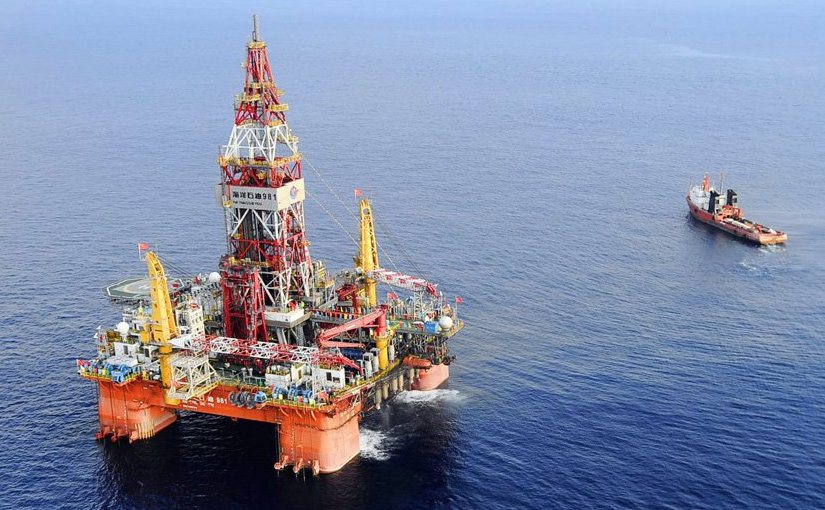China’s island building on the four-mile-long and two-mile-wide Subi Reef in the South China Sea has put the US in a tight spot. To protect its ally from China’s aggression, there are some who are concerned the US will be left with little choice but to constrain China by military means.
However, the US won’t directly engage China in any war in the foreseeable future, because the US dominates China with its superior naval and air force and the only way for China to level the playing field would be to apply nuclear weapons. Indeed, the nuclear nature of Sino-American warfare would be disastrous for both.
On that backdrop, there is, however, a possibility that the US could use its oil weapon instead to strike at the core of China’s weakness — it’s huge dependence on oil imports.
Currently, China imports 55% of its oil, almost half of which sails from countries in the Persian Gulf, and which accounts for 5.3 million barrels per day and is around 75% of Saudi Arabia’s production.
As a matter of fact, China’s reliance on Middle Eastern oil has gradually grown in line with its rapidly-increasing demand for oil. Right now, China has achieved the equivalent of the peak of US oil import dependence and it is not slowing down. The single largest source of China’s crude oil imports is Saudi Arabia.
China’s state oil reserves of 475,900,000 barrels (75,660,000 m3) plus the enterprise oil reserves of 209,440,000 barrels (33,298,000 m3) will only provide around 90 days of consumption or a total of 684,340,000 barrels (108,801,000 m3).
Meanwhile, the US is inching towards energy independence. With the technological breakthroughs of shale gas and tight oil, the US has started an energy revolution: US crude oil production has increased by 50% since 2008. With that increase, as well as more efficient cars, oil imports have come down from their high of 60% in 2005 to 35% today—as low as in 1973. With domestic production and gasoline mileage still increasing, imports will continue to decrease. It’s also impressive that US natural gas production has increased by nearly 33% since 2005, and shale gas has gone from 2% of output in 2000 to 44% today.
As of 2013, the United States is the world’s second largest producer of crude oil, after Saudi Arabia, and second largest exporter of refined products, after Russia.
According to BP Plc’s Statistical Review of World Energy, the US has surpassed Russia as the biggest oil and natural-gas producer in 2014. While looking at total energy, the US was over 70% self-sufficient in 2008. In May 2011, the US became a net exporter of refined petroleum products.
With this newly acquired oil might, the US could trick Iran to block the Strait of Hormuz without any economic damage for the US, but which would strike a severe blow to China’s fragile economy.
Under such a scenario, the US Congress could reject the Iran nuclear deal and the US could give the nod to an Israeli air strike against Tehran’s nuclear facilities.
If such were to happen, Iran would retaliate by blocking the Strait of Hormuz. The Strait is the only sea passage from the Persian Gulf to the open ocean, which if it were blocked would cause China to scramble to meet its oil demands. Additionally, in China inflation would skyrocket, the yuan would plummet, and an economic meltdown would commence.
Under such a scenario, China would be forced to succumb to the might of the US’ oil weapon to save itself from a political, economic and social collapse. Such an oil weapon would achieve what the military couldn’t achieve, and at a less cost. This indeed is a scenario that China should be seriously concerned about.
*Zhang TingBing, Chief Strategist, Zhonghua Yuan Institute
Source: Eurasiareview










